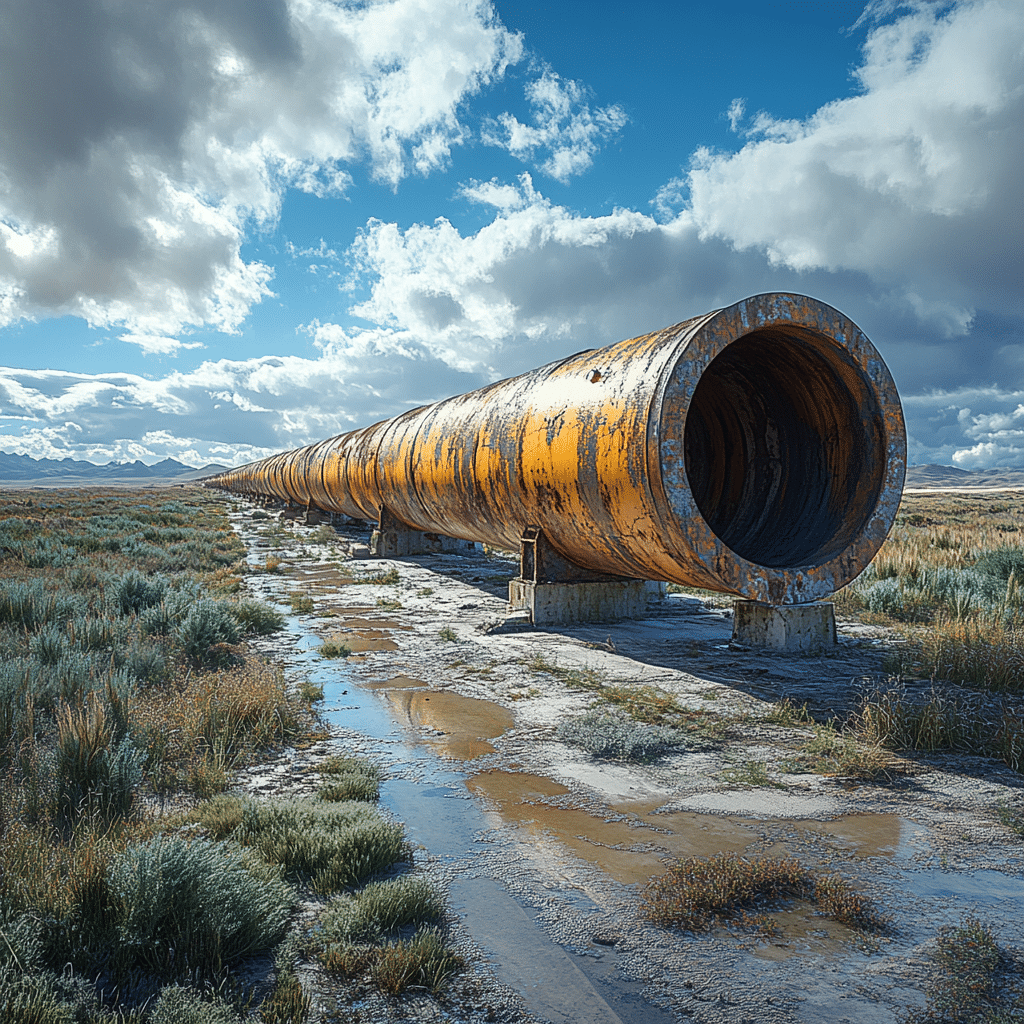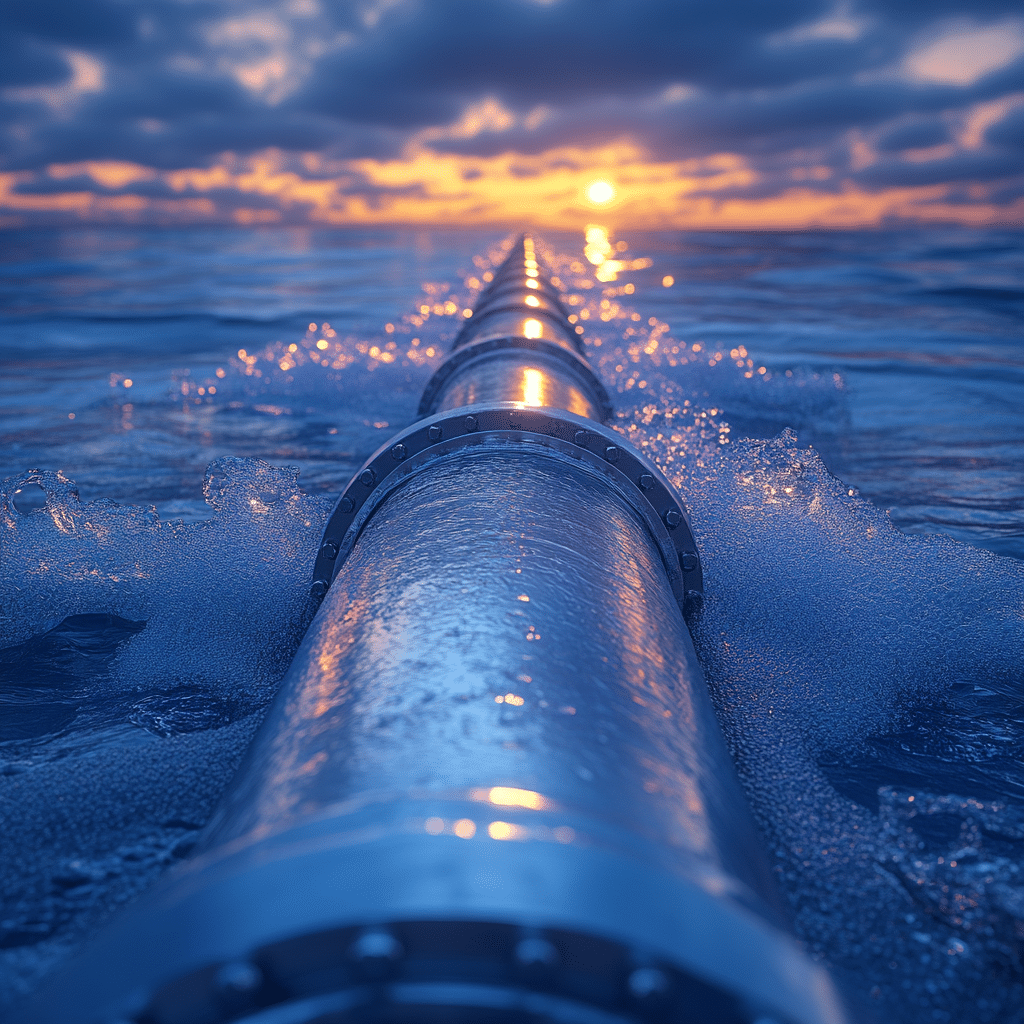In recent months, pipeline transport news has increasingly focused on an intriguing solution to our pressing energy challenge: blending hydrogen with natural gas in existing pipeline networks. With the world facing climate change and rising energy demands, the idea is to leverage current infrastructure to transition to cleaner energy alternatives. Governments and companies globally are striving to reduce carbon emissions, and hydrogen blending has emerged as a promising route. This article dives into the recent developments, challenges, and potential of hydrogen blending, shedding light on what’s happening in pipeline transport today.
Top 5 Innovations in Pipeline Transport for Hydrogen Blending
Companies like Gazprom and TransCanada lead the charge in developing advanced hydrogen injection technologies. Recent trials prove fruitful, showcasing how a blend of up to 20% hydrogen with natural gas maintains flow stability and pipeline integrity. As infrastructure ages, this innovation could be pivotal in modernizing our energy networks.
Safety in pipeline transport relies heavily on material compatibility with hydrogen. Duke Energy has rolled out ASTM-certified pipelines resistant to hydrogen-induced stress corrosion cracking. This development plays a crucial role in maintaining safety standards while minimizing methane leaks, a significant concern during blending operations.
Staying ahead in pipeline transport news entails robust monitoring. E.ON in Germany has harnessed the power of advanced IoT sensors, enabling real-time tracking of gas composition and pressure differences. This technology mitigates risks associated with hydrogen service and gives operators vital data to ensure a secure blending process.
In the U.S., the Department of Energy (DOE) is shaping the future of hydrogen blending by investing in standardized guidelines for transportation systems. These frameworks are crucial as they establish best practices and ensure that safety protocols that meet the evolving market needs are in place.
The H2 Pipeline Consortium has emerged as a collaborative force in research on hydrogen blending scalability. This partnership involves gas companies, universities, and government entities, working together on pilot projects that explore practical applications for pipeline infrastructure as we navigate the future of energy supply.

Understanding the Safety Aspects of Hydrogen Blending
Safety is front and center in pipeline transport news, especially regarding hydrogen’s well-documented flammability. Recent studies from the International Gas Union and the Gas Technology Institute underscore that regulated blending levels don’t compromise pipeline integrity. These examinations flag that proper assessments, including material compatibility and safety protocols, must occur before blending operations can safely expand.
As hydrogen blending gains traction, incorporating these safety checks becomes more paramount. Existing pipelines, primarily designed for natural gas, require re-evaluation to ensure they can handle hydrogen without risks. Just as a low ignition energy amplifies safety concerns, thorough testing and preparation will pave the way for responsible energy innovation.
Economic Implications of Hydrogen Blending
Transitioning to hydrogen blending isn’t simply a tech game; it has substantial economic implications. A report from McKinsey & Company shines a light on the cost savings of utilizing existing natural gas pipelines. Retrofitting these lines to accommodate higher hydrogen concentrations can be far cheaper than constructing brand-new infrastructures.
Governments play a critical role in this economic landscape. Offering incentives such as subsidies and grants could significantly ease the upgrade process, allowing teams to modify pipelines safely and effectively. By acting now, the shift toward hydrogen can be both smooth and economical, laying a robust foundation for the future.

Public Perception and Acceptance of Hydrogen Blending
As hydrogen becomes a household name, public sentiment is shifting. Pipeline transport news underscores hydrogen’s potential role in energy transition strategies, sparking discussions among various stakeholders. Organizations like the Hydrogen Council—which boasts members from heavyweight corporations like Air Liquide and Shell—are on a mission to educate the public about hydrogen’s advantages in reducing carbon footprints.
Building public trust is essential in this journey. Open discussions surrounding safety data and community involvement will help alleviate worries about hydrogen’s risks. Assurance and engagement are keys to navigating potential apprehensions and advancing hydrogen blending publically and politically.
Future Directions in Pipeline Transport for Hydrogen Blending
As we move deeper into 2024, pipeline transport news suggests a continuous push toward safe hydrogen blending in global energy dialogues. Significant investment in technology and partnerships among key players indicate fertile ground for innovative energy practices. Research looks poised to focus more on the environmental benefits of blending hydrogen, emphasizing its role in effectively cutting carbon emissions and meeting long-term sustainability goals.
In this era prioritizing clean energy, refining our pipeline networks to incorporate hydrogen presents a promising balance of innovation and environmental accountability. The prospects described here reflect the latest advancements in pipeline transport for hydrogen blending and point to a future filled with potential.
The ongoing story of hydrogen blending may well define the energy sector in the coming years, similar to how mortgage lenders reshape the housing market. With collaboration and commitment, a cleaner, more sustainable energy future is truly on the horizon.
Pipeline Transport News: What You Might Not Know
Surprising Stats and Secrets
Did you know that pipeline transport is one of the safest methods for moving hydrogen and other gases? It’s true! This delivery method has seen a significant uptick in efficiency, just like how a well-aimed shot can send ping pong Balls bouncing off walls without missing a beat. Speaking of efficiency, some stats indicate that pipelines can deliver a whopping 90% of natural gas consumed in the U.S. daily, showcasing just how essential this infrastructure really is.
Environmental Focus
With rising concerns about climate change, the push for hydrogen blending in pipelines is gaining steam. This transition is similar to how folks are discovering the benefits of lesser-known plants like hairy bittercress, which offers some unique benefits for local ecosystems. Those who keep tabs on pipeline transport news note that blending hydrogen into existing natural gas systems is not only clever but also a way to cut emissions without needing extensive new investments.
Fun and Community Impact
Who knew pipelines could have a ripple effect even in pop culture? Just like how the vibrant energy at the All Things Go Festival in Maryland draws crowds, the developments in pipeline transport are attracting attention from environmental activists and engineers alike. It’s exciting to see how innovation in transporting hydrogen, which is often depicted in anime, can help communities thrive. And if you’re wondering about trends that support community growth, mortgage lenders are now interested in how clean energy initiatives influence home values. So keep an eye on pipeline transport news; it’s more interconnected with our daily lives than you think!

What is the current status of the Mountain Valley pipeline?
The Mountain Valley Pipeline is still under construction, facing ongoing legal challenges and regulatory hurdles, which have caused significant delays.
What is the future of pipeline transportation?
The future of pipeline transportation may incorporate more renewable energy sources and adapt existing systems to transport hydrogen and carbon dioxide, keeping modernization and safety protocols in focus.
What is the biggest pipeline transport?
The biggest pipeline transport system in the world is the U.S. natural gas transmission and distribution network, which stretches nearly 2 million kilometers long.
How deep are oil pipelines buried?
Oil pipelines are typically buried about 3 to 6 feet deep to protect them from environmental and accidental impacts.
How long will it take to complete the Mountain Valley Pipeline?
The completion timeline for the Mountain Valley Pipeline has been postponed, and it’s currently uncertain when it will finally be finished due to various delays.
What is the problem with the Mountain Valley Pipeline?
The Mountain Valley Pipeline has faced numerous issues, including legal disputes, environmental concerns, and regulatory challenges that have stalled its progress.
How long will pipeline last?
Most pipelines are designed to last several decades, but their lifespan can vary due to factors like maintenance, construction quality, and environmental conditions.
What is the problem of pipeline transportation?
Pipeline transportation has challenges including environmental risks, regulatory complexities, and the need for maintenance and upgrades to prevent leaks and ruptures.
Should we continue to build oil pipelines in the US?
Opinions differ on whether to continue building oil pipelines in the U.S., with some arguing for energy independence while others emphasize environmental concerns.
Who owns the most pipelines in the US?
The company with the most pipeline ownership in the U.S. is Berkshire Hathaway, which has substantial holdings across various pipeline assets.
What company owns 91,000 miles of pipeline?
Enbridge owns about 91,000 miles of pipeline, making it one of the largest pipeline operators in North America.
Who is the largest pipeline contractor?
The largest pipeline contractor is often seen as the energy services firm, Quanta Services, which specializes in utility infrastructure projects.
What country has the most pipelines?
The U.S. has the most pipelines of any country, reflecting its extensive network for oil and gas transportation.
How many people died building the Alaska pipeline?
During the construction of the Alaska pipeline, about 31 workers tragically lost their lives, highlighting the dangerous nature of such projects.
Do oil pipelines go underwater?
Yes, many oil pipelines are built to go underwater, especially when crossing rivers and other bodies of water.
Is Mountain Valley Pipeline approved?
The Mountain Valley Pipeline has received certain approvals, but it still faces ongoing legal challenges that might affect its status.
How complete is the Mountain Valley Pipeline?
The Mountain Valley Pipeline is approximately 94% complete, but ongoing issues are delaying its full operation.
Is Mountain Valley Pipeline for sale?
As of now, the Mountain Valley Pipeline is not officially for sale, though its status may change depending on financial and regulatory conditions.
What company is building the Mountain Valley Pipeline?
The Mountain Valley Pipeline is being constructed by a consortium including Equitrans Midstream Corporation, which is leading the project efforts.



